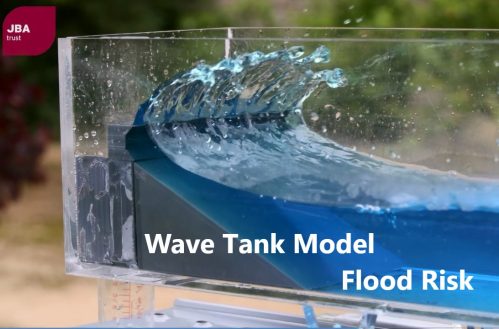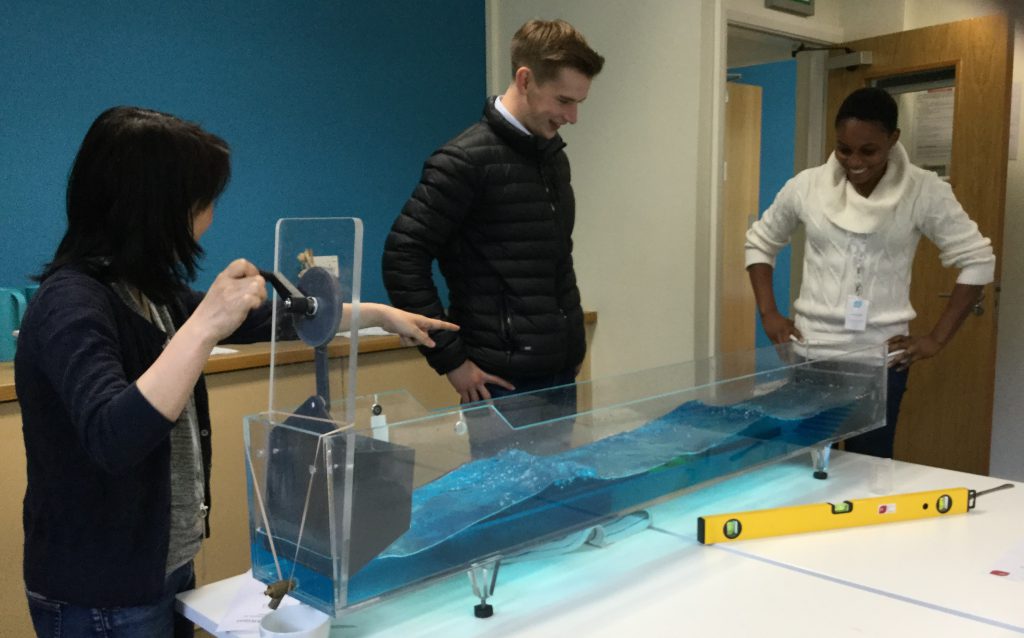
Wave tank
The portable wave tank demonstration shows the performance of coastal defenses under different wave conditions.
Background
The wave tank shows how different combinations of coastal defences and wave and tide conditions affect the potential for overtopping and flood risk.
Over-topping rates can be measured for the following defences and conditions:
- beach during a storm surge
- vertical and recurved sea walls
- stepped and sloped revetments
- rock armour
- submerged near-shore breakwater
Full video on Wave Tank
In this video Daniel Rodger from Jeremy Benn Pacific uses the wave tank to demonstrate how effective different types and combinations of coastal defences are at preventing wave overtopping and flood risk.
The demonstration measures the rates of overtopping for the following defences and conditions:
- beach during a storm surge
- vertical and recurved sea walls (with and without a beach)
- stepped and sloped revetments
- rock armour
- submerged near-shore breakwater
The prototype wave tank was developed in 2015 with a team of PhD students from the Fluid Dynamics Centre for Doctoral Training (CDT) at the University of Leeds, the Coastal Risk Management team at JBA Consulting and Hydrotec Ltd. We then continued to work with Hydrotec Ltd who used the prototype designs to fabricate the final wave tank.
We have recently upgraded the paddle mechanism to good old fashioned hand power using a cam and wedge system (see photo below). We find that this is a great way of encouraging audience participation, and is more reliable and robust than the electrically powered paddle system used in in the film. It also reduces the risks associated with water and electricity being in close proximity.

Students practice their wave tank demonstration skills
Generating waves
The wave paddle is powered sustainably by people and uses a cam and wedge system (as shown in photos to the right).
This system is an excellent way of encouraging audience participation, and is more reliable and robust than the electronic system used in in the film.
It also reduces the risks associated with
water and electricity being in close proximity.
Facilities required
Access to water. The wave tank needs about 25 litres of water (plus some extra for climate change scenarios!).
Access to a drain. The water can be emptied into a bucket and then carried to the nearest drain.
Space to set up the tank on either a table or
trestles.
Specifications
The tank is made from 10mm Perspex sheets which are connected together with a solvent based acrylic glue.
Tank dimensions: 1,500 x 200 x 400mm
There are drain taps at each end of the tank to take the overtopping measurement (coastal defences end) and drain the tank (paddle end).
Factsheet: Dimensions, demonstration requirements and other vital statistics for the wave tank are available in this factsheet.

